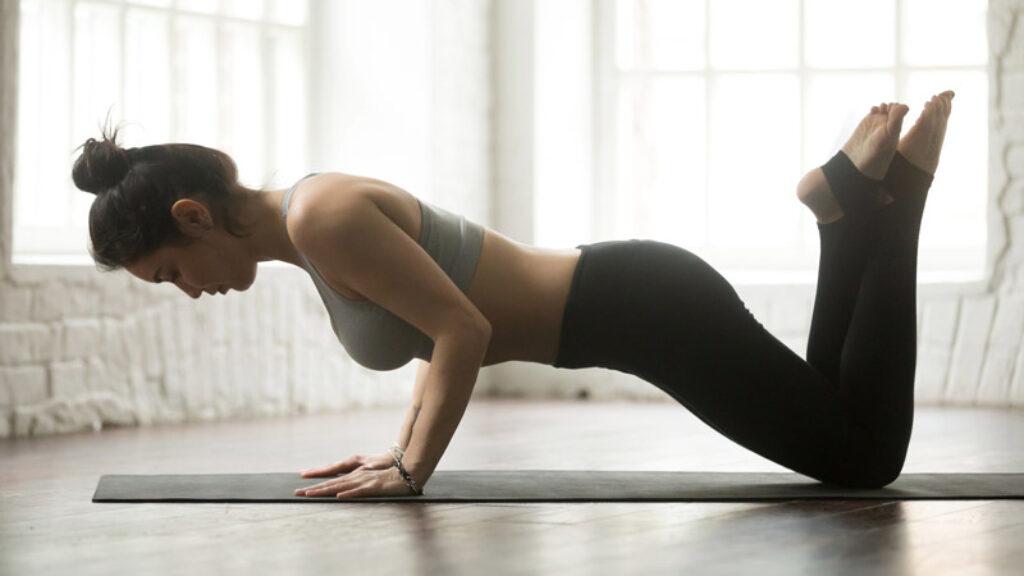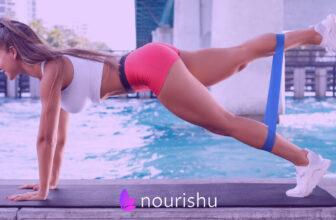Welcome to the world of calisthenics, the art of using your own body weight to build strength, flexibility, and endurance. This ultimate beginner guide is your first step into a fitness journey that will transform your body and mind.
Whether you’re looking to tone up, build muscle, or simply get healthier, calisthenics offers a versatile, low-cost path to achieving your goals. Read on to learn about the core exercises, how to create your workout plan, and the tips you need to succeed.
What is Calisthenics?
Calisthenics is a form of strength training where one uses their body weight to perform exercises. It emphasizes muscle growth, endurance, and flexibility without the use of weights or machines. This fitness discipline involves a variety of movements like push-ups, pull-ups, and squats.
Benefits of calisthenics include improved muscular endurance and an increase in functional strength. The simplicity of calisthenics makes it accessible to beginners who can perform exercises almost anywhere. It cultivates body awareness and control, contributing to overall physical fitness.
When comparing calisthenics vs weight training, calisthenics offers the advantage of minimal equipment. While weight training focuses more on isolated muscle growth, calisthenics encourages full-body fitness. Both have their place in a balanced workout regimen, depending on one’s goals.
Getting Started with Calisthenics
Calisthenics offers beginners a foundation in fitness by promoting balance, control, and core strength. Without the need for fancy equipment, one can practice calisthenics at home or at the gym using basic tools like a pull-up bar or resistance bands.
When beginning calisthenics, your body weight and current fitness level are important considerations, but they shouldn’t deter you from starting. Calisthenics is adaptable and can be tailored to suit individuals at any level of fitness or body weight. The key is to start with basic movements and gradually progress as your strength and confidence grow.
The goal is to challenge your muscles progressively and safely, ensuring consistent improvement in your fitness level. Remember, the beauty of calisthenics lies in its simplicity and the ability to use your bodyweight as resistance, so start where you are and build from there.
Fundamentals of Calisthenics Training
Proper form is fundamental to calisthenics. Beginners should focus on mastering movements to build coordination and stability. Starting exercises include push-ups, squats, and planks. Initially, aim for proper form rather than the number of repetitions.
Developing a Calisthenics Workout Plan
For a beginner, a calisthenics workout plan should have structured progressions. They should start with basic exercises and gradually increase intensity. A typical plan could involve two to three sets of repetitions.
Warm-up and Mobility Exercises
Warm-up and mobility exercises are crucial for a safe workout. They prepare the muscles and joints for the demands of intense movements. Beginners should include dynamic stretches and light cardio activities in their warm-ups.
Nutrition and Recovery for Calisthenics
Nutrition fuels progress and supports recovery. Beginners must eat balanced meals to replenish energy and repair tissues. Adequate hydration is also essential for one’s recovery process.
Safety and Injury Prevention
Safety is imperative in calisthenics. Beginners must learn and maintain proper form to prevent injuries. They should not rush into advanced exercises without mastering the basics first.
Calisthenics at Home vs Gym
One can effectively practice calisthenics at home with minimal equipment. However, a gym might offer more variety like resistance bands and other apparatuses. Both settings can support a solid progression in calisthenics training for beginners.
Essential Calisthenics Exercises

Calisthenics exercises are fundamental for building strength and flexibility using one’s body weight. They are designed to improve muscular and cardiovascular endurance, as well as overall stability.
Upper Body Strength
Upper body exercises such as push-ups, pull-ups, and dips target the biceps, triceps, and other muscle groups. These exercises enhance upper body strength with push-ups serving as a horizontal push exercise.
Core and Stability Workouts
Planks and leg raises are key for developing core strength and stability. A strong core supports various calisthenics skills, including the handstand and dragon flag.
Lower Body and Leg Exercises
For the lower body, squats, lunges, and pistol squats are essential. They increase leg strength and contribute to overall lower body conditioning.
Full Body and Compound Movements
Burpees and muscle-ups are intense compound exercises that engage multiple muscle groups. These movements provide a high-intensity full-body workout.
Skill Development
Developing skills like the human flag, planche, and front lever require patience and progression. They build on the strength and flexibility acquired from fundamental exercises.
Each exercise contributes to building a solid foundation for advanced calisthenics movements and promotes a range of physical benefits.
Progressing in Calisthenics
Progress in calisthenics hinges on consistency and methodical advancements in your routine. Whether you aim to increase muscle mass or harness perfect form, understanding scalability and the implementation of precise progressions is vital.
Tracking Your Progress
One can document their journey in calisthenics by maintaining a detailed log. Noting every workout session helps track improvements in endurance and strength. Beginners should make a habit of this practice to visibly see their evolving capabilities and to stay motivated.
Increasing Intensity and Difficulty

To foster progress, it’s imperative to gradually raise the intensity of workouts. Implementing more challenging progressions like advancing from knee push-ups to classic push-ups can effectively build muscle mass. With time, one might increase reps or incorporate high-intensity interval training for amplified results.
Adapting Workouts to Your Level
Every individual should tailor their calisthenics routine to their current fitness level. Modifications, such as reduced sprint lengths or inclined push-ups, can help maintain technique. Scalability ensures steady progression while minimizing the risk of injury from overexertion.
Combining Calisthenics with Other Workouts
Integrating calisthenics with other forms of exercise can enhance overall fitness. For instance, pairing calisthenics with walking or lunges can boost cardiovascular health. This synergy promotes a more balanced development of both strength and endurance.
Advanced Techniques and Exercises
As novices master basic movements, they’re encouraged to try advanced exercises. Techniques such as the muscle-up demand flawless form and a solid foundation of upper body strength. Inward focus on technique refinement is crucial before attempting these complex movements.
The Role of Equipment in Calisthenics
Calisthenics centers around using one’s own bodyweight and gravity to create resistance. Equipment can enhance this practice by adding variety and increasing difficulty.
Essential Equipment for Beginners
For newcomers, minimal equipment is required to get started with calisthenics. A pull-up bar and resistance bands offer enough versatility for a full-body workout. Beginners find that these tools help develop strength and improve technique.
Learn more about essential calisthenics equipment for beginners here.
Using Bodyweight and Gravity
Bodyweight training is the crux of calisthenics, exploiting gravity for resistance. It necessitates no equipment, making it accessible to many. Beginners leverage their own bodyweight to learn balance and control.
Innovative Equipment for Calisthenic Athletes
Advanced practitioners often integrate innovative equipment such as weighted vests or machines designed for calisthenics. This equipment is tailored to calisthenic athletes seeking to challenge themselves and push their limits.
Understanding Body Mechanics
Understanding body mechanics in calisthenics involves knowing how muscles function during exercise and the importance of maintaining proper form. Mastery of these concepts is crucial for safety and effectiveness.
Anatomy and Muscle Engagement
When engaging in calisthenics, one must be aware of the muscle groups being targeted. The body’s muscles work in harmony, with each exercise impacting multiple muscle groups. For example, push-ups engage the chest, shoulders, triceps, and core.
Proper Form and Technique
Maintaining proper form and technique is essential to prevent injury and achieve the maximum benefit from calisthenics exercises. Proper technique ensures each muscle group is activated appropriately. This requires posture and coordination to be aligned with the exercise’s intended motion.
Benefits of Isometric Exercises
Isometric exercises involve static muscle contractions without visible movement, like planks. These exercises enhance core strength and stability, benefiting both the upper and lower body. They also contribute to improved body mechanics and muscle endurance.
Calisthenic Leaders and Community Support
Now that you have a good overview of calisthenics basics, let’s talk about where you can turn for additional and ongoing support.
If you’re just getting started in the world of calisthenics, you may benefit from joining an online community for support. You can find many calisthenics groups on Facebook. There’s also a lot of instructional videos and beginner fitness advice available on Youtube.
Some of our favorite calisthenic Youtube channels include:
These Youtube channels offer instructional video content that spans from basic exercises to more advanced techniques, making calisthenics accessible to all fitness levels.
Last thing before you get started, let’s set some expectations by going over common misconceptions about bodyweight workouts.
Common Calisthenics Misconceptions
Misconception 1: Calisthenics Is Easy – Many beginners believe calisthenics only involves simple exercises like push-ups and pull-ups. However, it requires significant strength and skill.
Misconception 2: It Won’t Build Muscle – Some say calisthenics can’t build muscle like weightlifting. But with progressive overload, one can achieve muscle growth efficiently.
Misconception 3: It’s Only for the Young – Contrary to the belief that calisthenics is for young people, individuals of all ages can safely practice it with appropriate modifications.
Misconception 4: No Risk of Injury – People often think calisthenics has a lower risk of injury because it’s bodyweight training. Without proper form, injuries can occur just as with any exercise regimen.
Misconception 5: Equipment Is Unnecessary – Beginners sometimes assume they don’t need any equipment. While it’s minimal, tools like pull-up bars and resistance bands can enhance training.
Misconception 6: You Don’t Need Rest Days – The belief that one can train daily without rest because it’s just bodyweight is false. Muscles need recovery time to grow and prevent overuse injuries.
Stay tuned as we’ll be coming out with more articles on body weight exercises. In the meantime, check out those Youtube channels for some of the best calisthenics advice.

